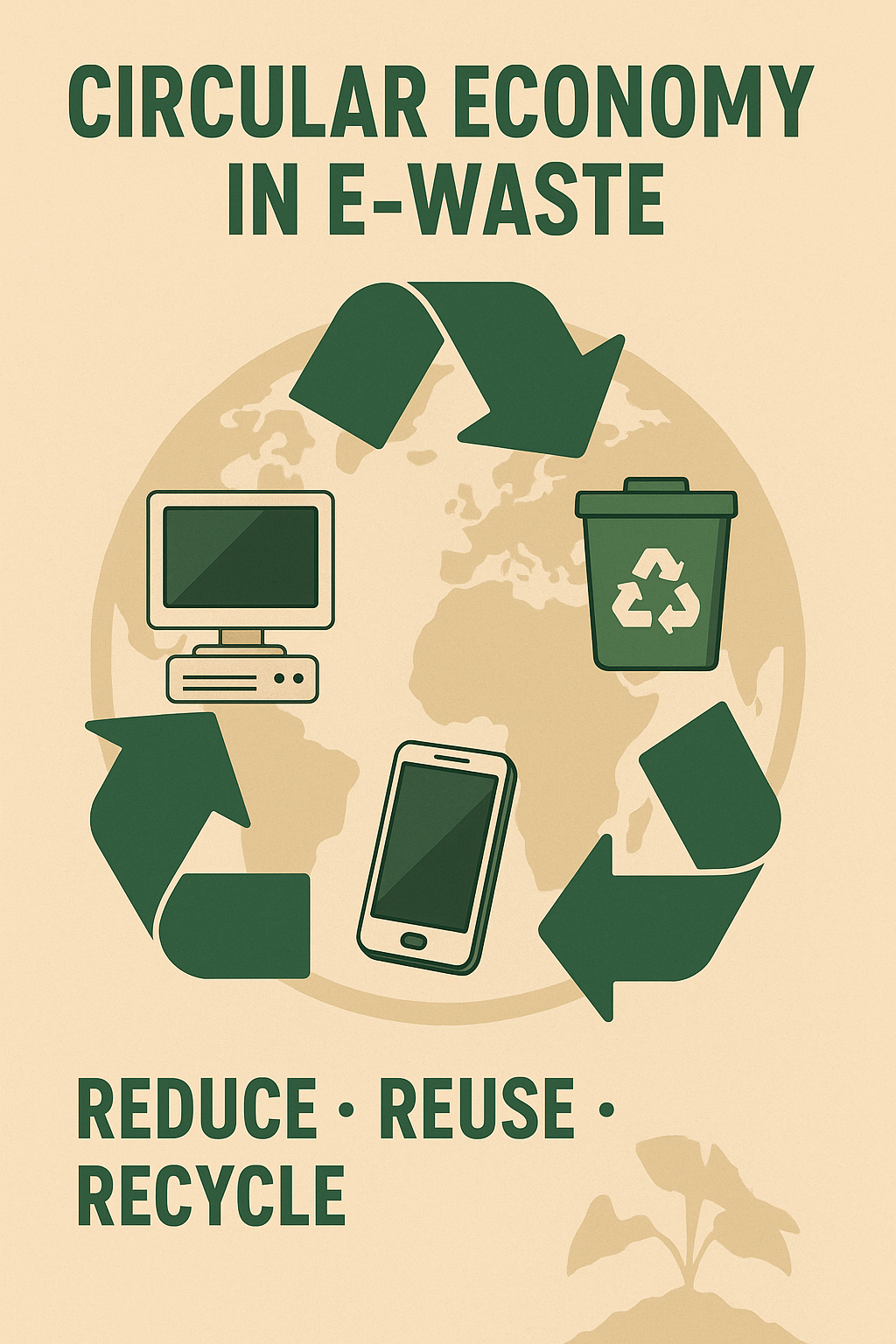In a world driven by technology, electronic waste (e-waste) is growing at an alarming rate. Every year, millions of old phones, laptops, and devices end up in landfills, causing severe environmental damage. But there’s a smarter, more sustainable path forward — the circular economy in e-waste management.
What Is a Circular Economy in E-Waste?
A circular economy is an innovative approach that focuses on extending the lifecycle of products. Instead of the traditional “take, make, dispose” model, it emphasizes reduce, reuse, and recycle. In the context of e-waste, this means repairing, refurbishing, and responsibly recycling electronics to minimize waste and conserve resources.
Why Is It Important?
- Environmental Impact: Proper e-waste recycling prevents toxic materials from polluting soil and water.
- Resource Conservation: Recovering precious metals from used electronics reduces the need for new mining.
- Job Creation: The circular economy creates green jobs in repair, refurbishment, and recycling sectors.
- Energy Savings: Reusing components consumes less energy than manufacturing from scratch.
India’s E-Waste Generation & Recycling: Key Statistics
- E-Waste Generation: In the financial year 2023-24, India generated approximately 1.75 million metric tonnes (MT) of e-waste, marking a 72% increase from 1.01 million MT in 2019-20.
- Recycling Rate: In 2021-22, about 527,132 tonnes of e-waste were processed through registered recyclers, reflecting a significant rise from previous years.
- Informal Sector Dominance: Despite improvements, over 95% of e-waste is still handled by the informal sector, often using unsafe and environmentally harmful methods
🏙️ Urban Hotspots for E-Waste
- Major Cities: Urban centers like Mumbai, Delhi, Bengaluru, Chennai, and Kolkata are the top contributors, with 65 cities generating over 60% of India’s total e-waste.
- Seelampur, Delhi: This neighborhood is recognized as India’s largest e-waste processing hub, handling approximately 30,000 tonnes daily and employing nearly 50,000 workers
🛠️ Regulatory Measures & Circular Economy Initiatives
- E-Waste (Management) Rules, 2022: Effective from April 1, 2023, these rules introduced an enhanced Extended Producer Responsibility (EPR) framework, mandating manufacturers, producers, refurbishers, and recyclers to register on a centralized portal developed by the Central Pollution Control Board (CPCB).
- Objectives: The updated regulations aim to:
- Facilitate the transition of the informal sector to formal operations.
- Ensure environmentally sound recycling practices.
- Promote a circular economy through scientific disposal methods.
- Introduce provisions for environmental compensation and regular audits
♻️ Moving Forward: Embracing Sustainable Practices
While strides have been made in formalizing e-waste recycling, significant challenges remain, particularly in integrating the vast informal sector and enhancing public awareness. Strengthening infrastructure, enforcing regulations, and fostering collaborations between stakeholders are crucial steps toward sustainable e-waste management in India.
How You Can Contribute
- Donate or Sell Old Devices: Give your gadgets a second life.
- Choose Certified E-Waste Recyclers: Ensure your waste is handled responsibly.
- Support Brands Embracing Circularity: Look for companies offering repair programs or recycling incentives.
- Spread Awareness: Educate others about the benefits of sustainable tech use.
A Powerful Reminder
As depicted in the visual above, a circular economy revolves around a simple but impactful principle — Reduce. Reuse. Recycle. By rethinking how we handle electronics, we can protect the planet while building a more sustainable future.
At [Your Brand Name or Epicircle], we’re committed to promoting a greener tomorrow through e-waste recycling solutions that support the circular economy. Join us in making a difference.
Tags:
#CircularEconomy #EWasteRecycling #SustainableTech #GreenFuture #ReduceReuseRecycle #ElectronicWasteManagement #EcoFriendly



Leave A Comment